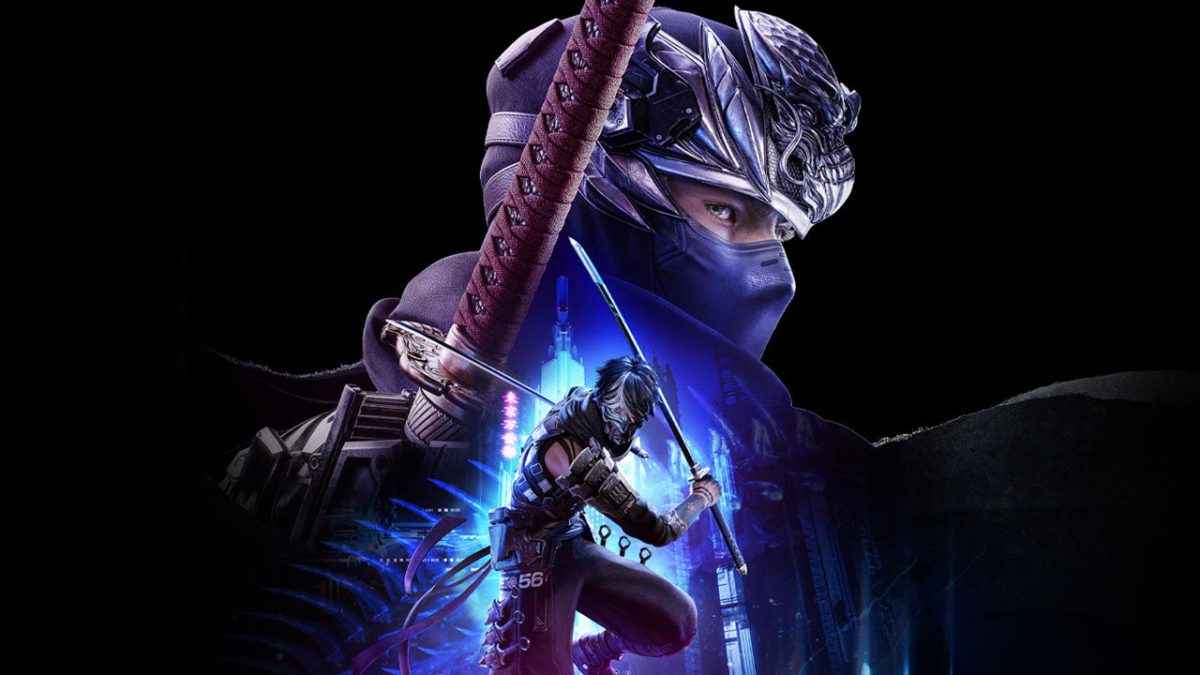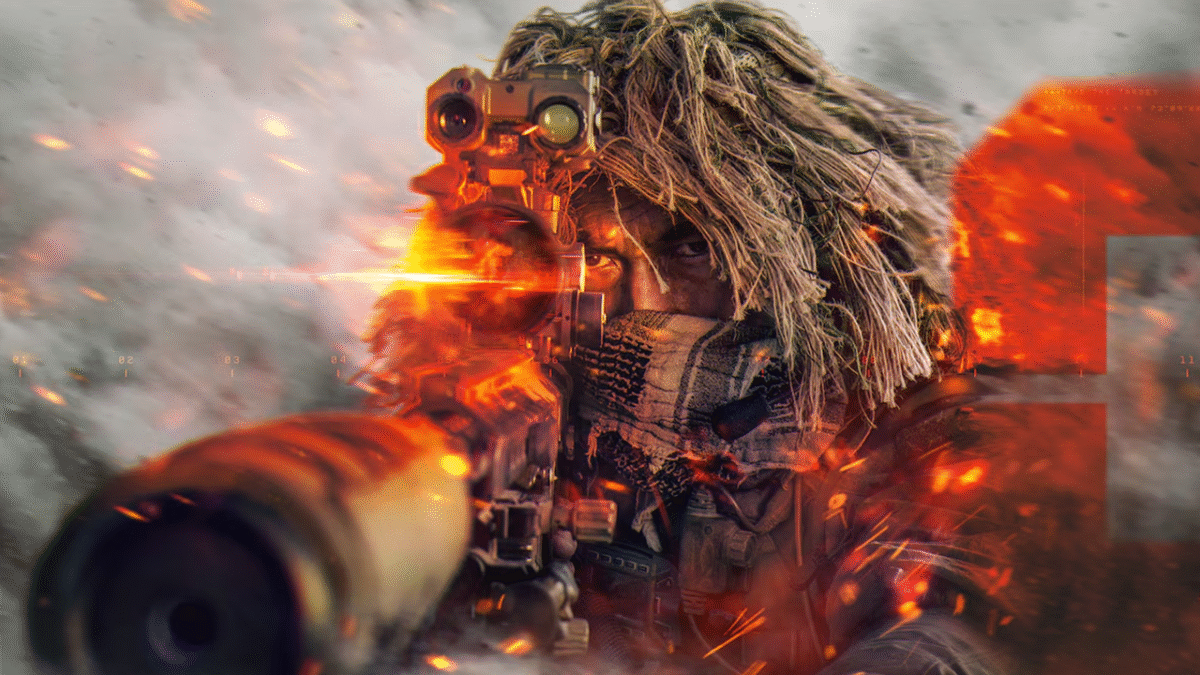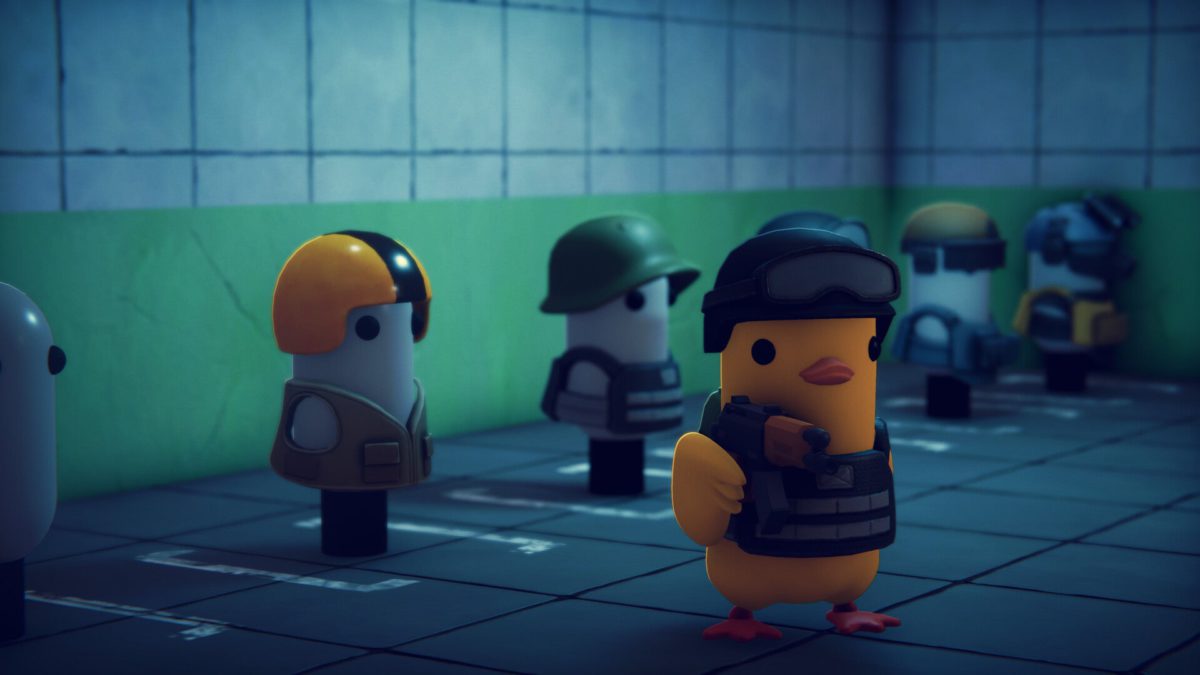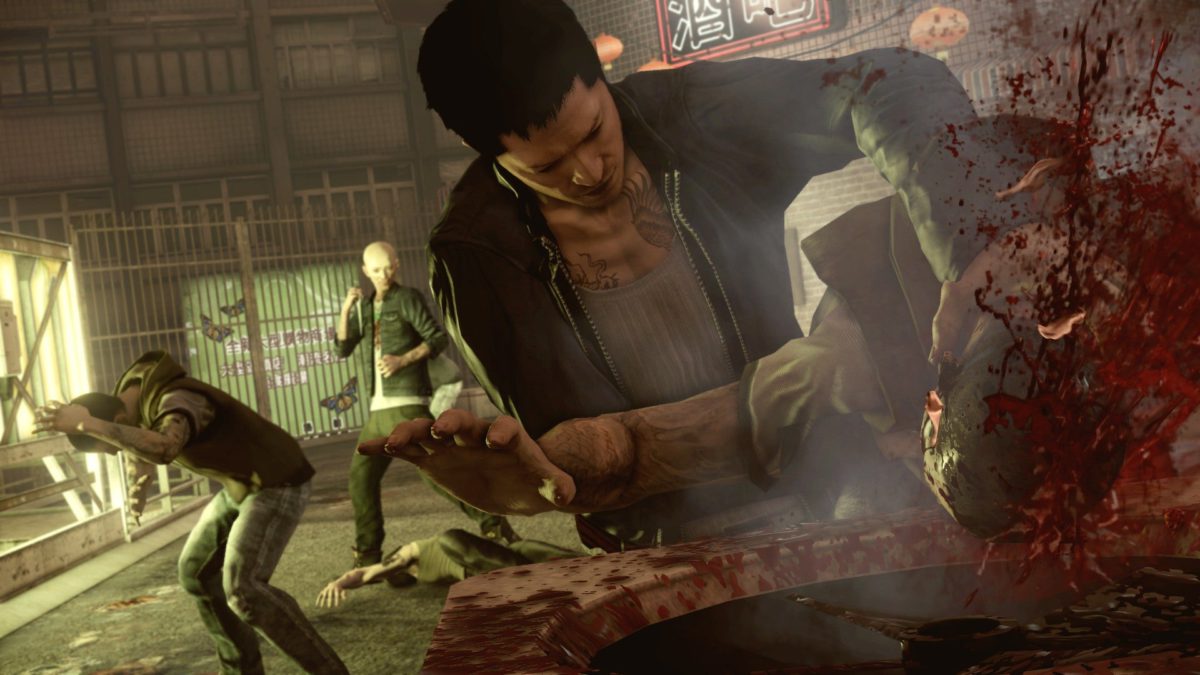
In so many ways, Ninja Gaiden 4 is exactly what I wanted it to be. It’s a collaborative effort between Team Ninja and Platinum Games, two of my all time favorite developers; it builds off the combat from Ninja Gaiden 2, which has the best action of the series in my eyes; and it comes packed with small touches that make it a bit more approachable without sacrificing the tough-as-nails difficulty that longtime fans like me expect. But while I’d even go so far as to say this combat system is among the very best I’ve ever seen, Ninja Gaiden 4 stumbles in many other areas – from its bland new lead character, to its uninspired level design, to its predictable story that falls completely flat. The action is still so good that a lot of those shortcomings get deflected like bullets against Ryu Hayabusa’s sword, but others slip through that defense and wound what is otherwise an incredible revival for the Master Ninja.
Story has never been a selling point of the Ninja Gaiden series, so it didn’t come as a surprise to me that Ninja Gaiden 4’s plot was one of its weakest elements. It introduces us to our new protagonist, Yakumo, a skilled ninja of the Raven Clan whose initial goal to kill a priestess of the Dark Dragon instead quickly turns into a mission to escort her to a handful of magic seals in an effort to really for realsies kill the Dark Dragon for good this time.
What follows is an extremely predictable 10-hour campaign with attempts at big emotional moments that fall flat because the legwork to make you care about these characters is never done. There is some banter that happens between Yakumo, his handler, and the other members of his little Raven Clan squad, but it’s never charming or endearing, and certainly never develops to a point where I ever got a real sense that these characters were actually close. Yakumo primarily communicates with grunts, growls, acknowledgements of the mission objectives, and angry threats, and as a result just comes off as a lame edgelord most of the time.
You do get to play a couple of chapters as Ryu toward the end, and while these are a welcome reprieve, they also feel like a huge missed opportunity. His levels have him retracing Yakumo’s steps, fighting through the same environments, mostly the same enemies, and the same bosses, but this time with fewer combat options since Ryu only has access to one weapon, a far less interesting Gleam Form to replace Yakumo’s Bloodraven Form, and just four returning Ninpo super attacks. Imagine Dante’s missions from Devil May Cry 4, except he doesn’t get any new weapons, his playstyle is almost exactly the same as Nero, and there’s none of the cool Dante trash talk.
I am willing to forgive an action game for a lot if the action itself is good, and fortunately Ninja Gaiden 4’s combat isn’t just good, it’s phenomenal. It’s incredibly fast, the enemies are intelligent and won’t let you do the same thing over and over again, there’s a great deal of flexibility that allows you to change up your approach to each fight, it looks slick as hell, and it has that trademark Team Ninja fluidity mixed with the over-the-top craziness that Platinum Games is renowned for. It just checks every single box.
The secret sauce here is enemy aggression. Enemies are absolutely ruthless in Ninja Gaiden 4. They don’t politely wait their turn as they attack from off screen, hit you with unblockables, grab you if you try to turtle up, armor through your regular attacks, and overwhelm you with sheer numbers. It’s a style of combat that is totally unique to this series, and that suffocating pressure from enemies is what makes every combat encounter such a thrilling fight for survival.
All of that may sound brutal, but Yakumo’s own toolset is extremely powerful as well. You have the iconic Flying Swallow technique that allows you to zip towards an enemy, potentially slicing their head off in just a single hit; the Izuna Drop air combo that ends in a flying piledriver that will instantly kill most enemies in a single blow; the plethora of powerful unlockable attacks for each weapon; and most importantly, ultimate techniques that let you absorb essence from defeated enemies to charge up a flashy combo that is completely invulnerable, can hit multiple enemies, and does extremely high damage.
None of this is new to Ninja Gaiden 4, and in fact is just a basic overview of what’s always been great about the combat in this series. But it’s important to talk about because my biggest concern coming into Ninja Gaiden 4 was that it would feel less like Ninja Gaiden and more like a Platinum Games game – not that there’s anything wrong with that, it’s just not what I’d want out of a return I’ve been waiting 13 years for. Fortunately, that’s not the case. This is a Ninja Gaiden game through and through with a light touch of Platinum flavor to enhance it even further.
That flavor mostly comes in the form of one big addition to the combat system: Yakumo’s Bloodraven Form. By holding down the left trigger, Yakumo will transform his weapon into a slower, more extravagant version with a completely new set of moves and the ability to break an enemy’s guard or interrupt their super attacks. These attacks are sick as hell, and definitely bring to mind some of Bayonetta’s Wicked Weave heavy attacks, especially the Rapier that turns into a huge drill, or the staff that turns into a giant hammer.
But more than being cool to look at, they add a new dimension to combat that forces you to be reactive to how the enemies are dealing with your offense. If you go into autopilot and spam light attacks, enemies will block your strikes and deliver a damaging counter of their own. But if you notice that they’re flashing white and shrugging off your attacks, you can hit them with a Bloodraven Form attack to not only deal big damage, but also open them up to even more punishment after breaking their guard.
Bloodraven Form moves are tied to a meter that drains pretty quickly, adding an extra layer of resource management I enjoyed. These blood infused attacks are also generally pretty slow, which makes them a bit risky to try and interrupt a faster armored attack. So you need to decide whether to risk wasting your meter by pre-emptively using a blood attack to try and catch an armored move during its initial animation, whether to risk your health by trying to wait and react to one of their slower and more telegraphed armored moves, or or whether to use the meter defensively instead to try and perfectly block otherwise unblockable techniques. Whatever the case, having multiple different options to deal with a challenging combat encounter is crucial in a game like this, and Ninja Gaiden 4 is stacked with options to play around with.
One departure from previous games is that instead of individually upgrading your weapons and having each improvement come with new moves and increased power, this time around you must buy all of your upgrades a la carte. Universal upgrades that affect every weapon cost Ninja Coin, which is a currency gained primarily from completing side missions, optional Purgatory challenges, and as a reward for completing a chapter. Weapon specific techniques on the other hand must be purchased with Weapon EXP, which is gained simply by fighting enemies. The better you perform, the more Weapon EXP you get. I enjoyed always having something new to unlock the whole way through, even though I do think Ninja Gaiden 4 is a little stingy with your starting set of upgrades.
You’re not even able to absorb essence to instantly charge your ultimate technique, quickly charge it after landing from a jump, or even charge it up to level two by default. All of those techniques have to be purchased, along with staples like the aforementioned Flying Swallow and Izuna Drop. And that same currency is also used to purchase consumable items, leading to a brutal economy in the early going. Especially if you didn’t purchase the Deluxe Edition, which gifts players with a whopping 50,000 Ninja Coins right from the start. That’s enough to buy virtually every starting upgrade and fill up your inventory. If you only have the standard edition, the first couple of hours can be pretty rough as you slowly build up the arsenal of techniques that bring Ninja Gaiden 4’s combat to life.
The final new combat wrinkle is the addition of a Berserk Meter that fills up as you deal or take damage, as well as when you defeat delimbed enemies with Obliteration Techniques. When the Berserk Meter is full, your charged-up Bloodraven Form attacks will trigger Bloodbath Kills, which are basically cinematic one-hit kills. It’s another fun element of resource management that gave me a way to satisfyingly clear a whole screen of tough enemies in just a few seconds, if I managed to survive long enough to be able to build up the meter.
Platinum also injects a healthy dose of style and creative expression into the combat by giving Yakumo the ability to hot swap between his weapons with just the press of a button. So you can do cool things like launch an enemy with the dual swords, hit them twice in the air, switch to another weapon, hit them twice again, switch to a third weapon, max out that air combo, and then send them crashing down with an Izuna Drop. We’re not talking Devil May Cry levels of potential for combo creativity, but there’s still a lot of fancy stuff you can do between the many techniques that you’ll unlock for each weapon, and there’s even a training mode so you can practice optimizing your damage and stylish combos. Variety like this goes a long way for me in terms of making combat feel fresh and exciting throughout the entire campaign.
I did my first playthrough of Ninja Gaiden 4 on Hard, and while that was the sweet spot in terms of difficulty for me, it’s worth noting that you can change this setting at any point (except in Master Ninja mode), which is a great feature for anyone struggling with its demanding challenges. Hero mode has been added as well which allows you to enable auto-block and auto-dodge at low health, along with an auto-assist that allows you to do damaging combos with just single button presses. It’s not for me, but I appreciate its inclusion nonetheless as a way to let more people enjoy the spectacle and action of the Ninja Gaiden series.
While the action is pristine and the combat arenas themselves have some great interactable elements that give you the freedom to zip around from point to point, cutting up enemies along the way, the actual level design is pretty uninspired. There are occasional splashes of interesting architecture across the futuristic version of Tokyo that’s been twisted by the evil power of the Dark Dragon’s husk, but far more often you’ll just be wandering around very bland rooftops, identical looking corridors, and boring city streets. It doesn’t get much better once you’re out of Tokyo, either. You just trade those drab streets for foggy cliffsides, ugly sewers, and samey looking military bases.
There are a couple of fun travel sequences that break up all of the limb liberating sword slashing, like Sonic-esque rail grinding sections, bits where you have to glide on wind currents to soar over a mountain range, and some sewer surfing, but they’re repeated throughout the campaign with little to no variation or evolution. As a result, they end up feeling more like filler than anything else.
There’s a new sidequest system that allows you to gain some extra currency by completing optional tasks, like finding and defeating secret minibosses, capturing hidden collectible monsters called Gourdies, or just simply defeating a certain number of enemies in a specific area. It’s a nice addition that gives extra incentive to be thorough and not just run past optional fights, even though the drab and exceptionally linear level design doesn’t make it very exciting to actually explore.
My favorite thing to find hidden in a level though are the Purgatory Gates. These are optional challenge rooms with the cool twist of letting you decide how much health you want to attempt them with. The greater the health handicap, the greater the reward. These fights are by far the most intense and most fun challenges available, and I loved pushing myself to try and get through the hardest difficulty and then being handsomely rewarded for the effort.
Bosses have never been a strong suit for the Ninja Gaiden series but, funny enough, have always been a strength of Platinum Games. The mixture of the two seems to have gone about how you would expect, as the bosses in Ninja Gaiden 4 vary wildly in quality. There are a couple of truly great scraps against tough enemies with adrenaline pumping soundtracks that brought to mind some of Metal Gear Rising’s best fights. Meanwhile, others are just underwhelming battles against giant monsters with too much health and some frustrating gimmicks – from bosses that obnoxiously teleport around a large arena whenever you get close, to giant fiends that spawn annoying fodder enemies to distract from their own extremely dangerous attacks.
After beating the campaign, you unlock the Master Ninja difficulty, the ability to replay any stage, boss, or unlocked Purgatory Gate as either Yakumo or Ryu, and most substantially, 18 combat trials that feature unique modifiers and even a few enemies that I never encountered in the main game. These combat trials might have you clearing waves of enemies without using your Bloodraven Form or cause your health to tick down continuously, forcing you to balance using your ultimate technique to clear out enemies while also making sure to occasionally pick up the life-restoring orbs that are used to quickly charge it – or a trial might just prevent you from healing all together. I haven’t beaten all of these yet, but I am having a blast going through each of them and look forward to challenging my friends to top my scores on the leaderboards.

















